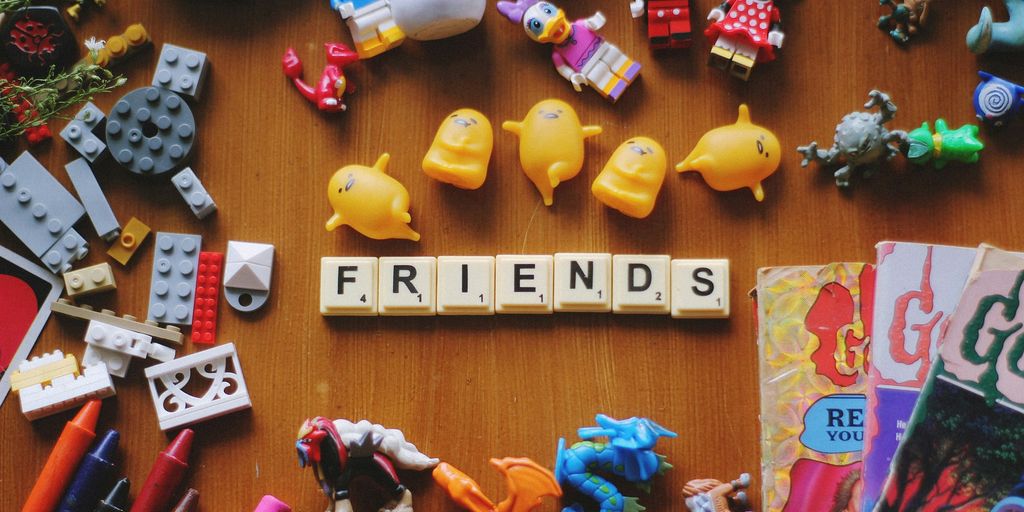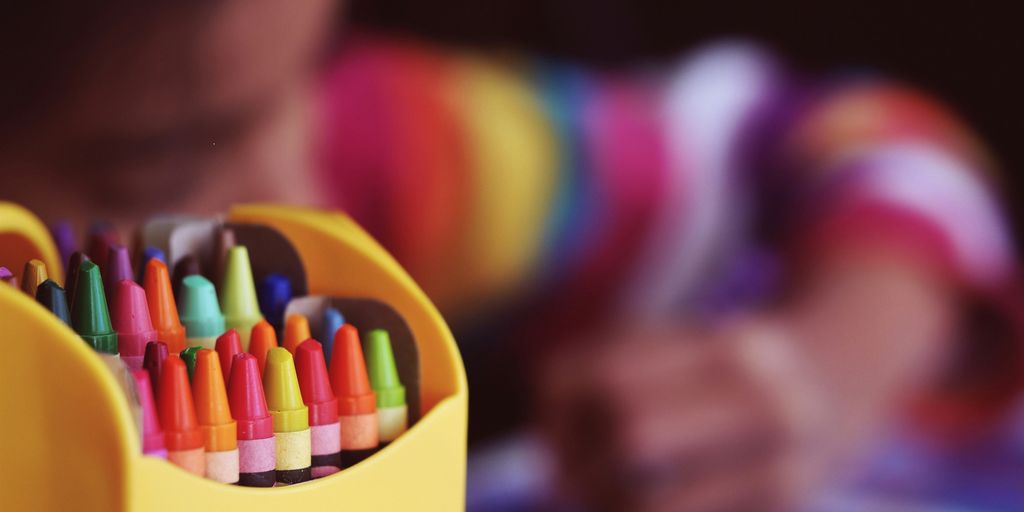
Learning can be fun and exciting for kids when you blend it with engaging activities. Whether you’re at home or outside, there are numerous ways to make education enjoyable and interactive. Here are ten activities that can help boost your child’s learning while keeping them entertained.
Key Takeaways
- Incorporating games like scavenger hunts can make learning interactive and fun.
- Phonics activities help children understand the sounds that letters make, which is crucial for reading.
- Writing exercises can be made enjoyable with creative methods like using play-doh or shaving cream.
- Color identification games not only teach colors but also enhance fine motor skills.
- Simple science experiments can spark curiosity and teach basic scientific concepts.
1. Scavenger Hunt
A scavenger hunt is a fantastic way to combine fun and learning. Kids love the thrill of searching for hidden items, and it can be tailored to fit any educational theme.
How to Set Up a Scavenger Hunt
- Choose a theme: This could be anything from nature to math problems.
- Create a list of items to find: Make sure the items are age-appropriate and safe.
- Hide the items: Spread them out in a designated area, like your backyard or living room.
- Provide clues: Write simple clues to guide the children to each item.
- Start the hunt: Let the kids loose to find all the items on the list.
Benefits of Scavenger Hunts
- Encourages critical thinking and problem-solving skills.
- Promotes physical activity and outdoor play.
- Can be adapted for different subjects, such as science or history.
A scavenger hunt can be a great way to make learning interactive and engaging. It’s a versatile activity that can be done indoors or outdoors, making it perfect for any weather.
For more ideas, you can explore 26 scavenger hunt ideas for kids or search for free printable scavenger hunt templates online.
2. Phonics Adventure
Embark on a phonics adventure with your child to make learning to read fun and engaging. Phonics is the foundation of reading, where kids learn that specific letters produce particular sounds. Here are some exciting activities to get started:
- Letter Hunt: Create a scavenger hunt by hiding foam or plastic letters around the garden or playground. Children search for the letters and match them to a phonics chart.
- Story Time: Kids and parents can join in this fun, read-together phonics adventure. Include five stories and five activities to make it interactive.
- Alphabet Books: Make alphabet books where each page is dedicated to a letter and its sound. Use pictures and words that start with that letter.
Turn phonics learning into an adventure rather than a boring lesson. Use games, stories, and creative activities to bring phonics to life.
By making phonics fun, children are more likely to enjoy learning and become better readers. So, grab some letters and start your phonics adventure today!
3. Writing Practice
Writing practice is a fantastic way to boost your child’s creativity and language skills. Here are some engaging activities to get them started:
- Picture Stories: Have your child draw a picture and write a sentence or two about it. This helps them connect visual and written storytelling.
- Alphabet Books: Create a book with a page for each letter of the alphabet. Your child can draw and write words that start with each letter.
- Feelings Journal: Encourage your child to keep a journal where they write about their feelings. This can help them express emotions and improve their writing.
- Personal Time Capsule Letters: Let your child write letters to their future self. They can open these letters years later to see how much they’ve grown.
Writing practice not only enhances language skills but also fosters emotional growth and creativity. It’s a fun and meaningful way for children to express themselves.
4. Color Identification
Color identification is a fun and essential skill for young children to learn. Recognizing colors helps in their cognitive development and enhances their ability to communicate effectively.
Color Sorting Games
One of the best ways to teach color identification is through color sorting games. You can use everyday items like buttons, blocks, or even socks. Ask your child to sort these items by color. This activity not only teaches colors but also improves their problem-solving skills.
Color Scavenger Hunts
Turn learning into an adventure with a color scavenger hunt. Give your child a list of colors and ask them to find objects around the house or yard that match each color. This activity is both engaging and educational, making it a favorite among parents.
Color identification activities are not just about learning colors; they also help children develop fine motor skills and hand-eye coordination.
Color Mixing Experiments
Introduce your child to the magic of color mixing. Use food coloring, water, and clear cups to show how primary colors mix to form secondary colors. This experiment is a great way to teach basic science concepts while having fun.
Memory Matching
Create a memory matching game with colored cards. Lay the cards face down and have your child flip them over two at a time to find matching pairs. This game enhances their memory and reinforces color recognition.
Incorporating these activities into your daily routine can make learning colors a delightful experience for your child. For more ideas on fun and educational activities, check out the blog at lullabyandlearn.com.
5. Counting Games
Counting games are a fantastic way to make learning numbers fun and engaging for children. These activities can be tailored to different age groups and skill levels, ensuring that every child can participate and benefit.
Here are some ideas to get you started:
- Number Matching: Create cards with numbers and corresponding dots. Kids can match the number card to the card with the correct number of dots.
- Counting Exercises: Use everyday items like buttons or beads to practice counting. Ask your child to count out a specific number of items.
- Math Operations: Introduce simple math operations like adding and subtracting using objects. For example, if you have 5 apples and add 3 more, how many do you have in total?
Counting games not only help children learn numbers but also improve their problem-solving skills and ability to follow instructions.
For more advanced learners, you can incorporate place values (ones, tens, hundreds) into the games. This can be done by grouping items into sets of ten and then counting the sets.
These fun, engaging, and active math games will keep kids entertained while they learn important math skills.
6. Science Experiments
Science experiments are a fantastic way to spark curiosity and foster a love for learning in children. These activities are not only educational but also incredibly fun and engaging. Here are some simple yet exciting science experiments you can try at home with your kids:
- Lava Lamp: Create a mesmerizing lava lamp using water, oil, food coloring, and a fizzy tablet. Watch as the colors swirl and dance, demonstrating the concept of density.
- Raising Water: Show your child how water can rise in a glass using a candle, water, and a plate. This experiment is a great way to introduce them to the principles of air pressure.
- Water Walking: Use paper towels and colored water to make water walk from one cup to another. This experiment is a fun way to teach kids about capillary action.
- Orange Fizz: Combine baking soda and vinegar inside an orange to create a fizzy reaction. This simple experiment is a great introduction to chemical reactions.
- Rainbow Jar: Layer different liquids like honey, dish soap, water, and oil to create a colorful rainbow in a jar. This activity helps kids understand the concept of liquid density.
- Colorful Foam: Mix hydrogen peroxide, dish soap, and yeast to create a foamy explosion. This experiment is both exciting and educational, teaching kids about chemical reactions.
- Pine Cone Experiment: Explore how pine cones open and close with changes in humidity. This experiment is a fun way to learn more about nature and plant biology.
Science experiments are a great way to make learning interactive and enjoyable. They encourage kids to ask questions, make observations, and think critically about the world around them.
7. Gardening
Gardening is a fantastic way to teach children about nature, responsibility, and patience. It’s more than just planting seeds; it’s about understanding the life cycle of plants and the importance of taking care of the environment.
Getting Started
To begin, choose a small plot in your backyard or use pots if space is limited. Let your child pick out the seeds or plants they want to grow. Encourage kids to create their own plant labels and decorate them with bright colors. This not only helps them learn about the different plants but also adds a personal touch to their garden.
Benefits of Gardening
Gardening offers numerous benefits for children:
- Physical Activity: Digging, planting, and watering plants are great ways to get kids moving.
- Educational Value: Kids learn about plant biology, weather patterns, and the importance of water and sunlight.
- Emotional Growth: Taking care of plants can boost a child’s confidence and teach them responsibility.
Gardening involves more than just putting a seed in the ground and watching it develop. A plot of dirt in your backyard may serve as a classroom for lessons in science, nutrition, and patience.
Fun Activities
Make gardening fun with these activities:
- Plant a Rainbow: Choose flowers of different colors and plant them in a rainbow pattern.
- Create a Miniature Garden: Use small plants and decorations to create a fairy garden or dinosaur landscape.
- Gardening Journal: Have your child keep a journal to track the growth of their plants and note any changes.
Gardening is a wonderful way to bond with your child while teaching them valuable life skills. The benefits of gardening in early childhood are physical, emotional, and educational, making it a perfect activity for young learners.
8. Cultural Exploration
Introducing your child to different cultures can be a fun and educational experience. Teach tolerance and inclusivity with these engaging activities that celebrate diversity.
Host a "Cooking Around the World" Day
Prepare simple, kid-friendly recipes from different countries. This hands-on activity allows children to explore new flavors and learn about different cultures through food.
Plan Cultural Field Trips
Field trips aren’t just for school! You can plan family trips to local museums, art galleries, or cultural festivals. These trips provide hands-on experiences and allow children to see real-life applications of their learning.
Create a Cultural Craft Box
Fill a box with craft supplies that represent different cultures. Your child can use these materials to create art projects that reflect various traditions and customs.
Read Stories from Around the World
Reading stories from different cultures can help children understand and appreciate diversity. Choose books that highlight various traditions, languages, and ways of life.
Exploring different cultures helps children develop a broader perspective and fosters a sense of curiosity about the world around them.
Celebrate Cultural Holidays
Participate in celebrations of cultural holidays from around the world. This can include making traditional crafts, cooking special dishes, or learning about the history and significance of the holiday.
9. Website Creation

Creating a website can be an exciting and educational activity for kids. Discover the secrets of website creation for kids with safe and age-appropriate tools. This activity helps children express their creativity and learning online.
Steps to Create a Website
- Choose a platform: Use kid-friendly platforms like Wix or WordPress to get started.
- Plan the content: Decide what the website will be about. It could be a blog, a photo gallery, or a project showcase.
- Design the site: Let your child pick colors, fonts, and layouts. This is where they can get creative.
- Add content: Help them write posts, upload photos, and create pages.
- Publish and share: Once the site is ready, publish it and share it with friends and family.
Building a website teaches kids valuable skills like planning, writing, and basic coding. It’s a fun way to learn and create something they can be proud of.
This fun hands-on class teaches kids how to build beautiful professional-looking websites for themselves, friends, and communities using Wix. As they grow older, they can continue to update and improve their site, learning more advanced skills along the way.
10. Math Games
Math games are a fantastic way to make learning fun and engaging for children. These activities can help improve their math skills while keeping them entertained. Here are some ideas to get you started:
- Mental Math Challenges: Write out a series of math problems on craft sticks. Kids can practice solving these problems in their heads during short breaks or while traveling. See how many sticks they can get through in a certain period of time.
- Monster Math: Download the Monster Math app to feed your child’s imagination with an ad-free, kid-friendly math adventure. This app is one of the best fun free math games available for children.
- Pop Top Math Game: Stick math equations on the top of bottle caps and write the answers inside. If a student answers a math fact correctly, they get to keep the top. The player with the most caps at the end of the game wins!
- Five-Minute No-Prep Games: These are perfect for transitions, waiting periods, or anytime you need to fill time productively. Quick and easy, they help build math skills without any preparation.
Math games not only make learning enjoyable but also help children develop critical thinking and problem-solving skills. Incorporating these activities into your child’s routine can make a significant difference in their academic performance.
Conclusion
Incorporating fun educational activities into your child’s daily routine can make learning an enjoyable and enriching experience. From creating vision boards to exploring the wonders of science through simple experiments, these activities not only boost your child’s knowledge but also foster creativity and critical thinking. Remember, the goal is to make learning feel less like a chore and more like an adventure. By engaging in these activities together, you can strengthen your bond with your child while nurturing their curiosity and love for learning. So, go ahead and try out these fun educational activities at home, and watch your child thrive!
Frequently Asked Questions
How can I make learning fun for my child at home?
You can make learning fun by turning lessons into games and hands-on activities. For example, use a scavenger hunt to teach numbers or colors. Incorporate creative tasks like drawing or building to make subjects more engaging.
What are some easy science experiments I can do with my child?
Simple experiments like making a lava lamp with water, oil, and an alka-seltzer tablet can be both fun and educational. You can also try chromatography flowers using coffee filters and markers to teach about color separation.
How can I teach my child about different cultures?
Create a vision board with your child featuring a country they are interested in. Add images, songs, and drawings related to that culture. This makes learning about different cultures interactive and personal.
What are some activities to improve my child’s writing skills?
Encourage writing by making it fun. Use play-doh to form letters or have your child write in shaving cream. You can also create alphabet books or connect-the-dots activities to make writing practice enjoyable.
How can I help my child learn math in a fun way?
Turn math into a game. Play ‘I Spy’ with numbers or count objects like toffees, which they can keep as a reward. Use everyday situations to practice counting and recognizing numbers.
Is it possible for young children to create a website?
Yes, young children can participate in creating a website with your help. They can choose topics, take photos, and learn the basics of how websites work. This can be a fun way to teach them about technology and creativity.






